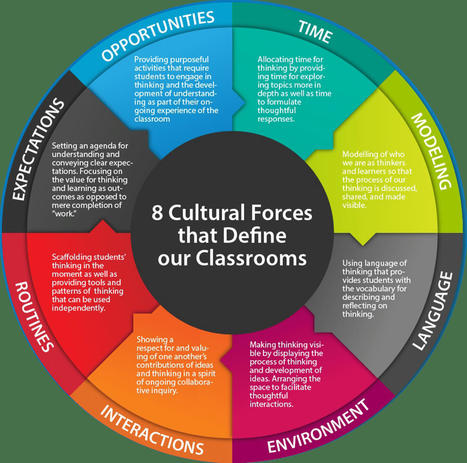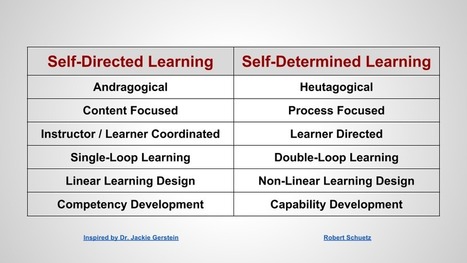In this age of abundance of information, shifting classroom pedagogy isn't nearly enough to make learning in school more relevant and authentic for the learner. Self-directed learning (andragogy), and self-determined learning (heutagogy) are the ideals necessary in making students "future ready" to live and learn in a web connected world.
While original research applied these concepts to mature learners, it has become apparent that even young children have an abundant capacity for recognizing and directing their own learning. Anyone who has observed toddlers learning how to walk and talk understand the motivation and skill development that quickly develops during these processes.
Considered by some to be on a learning continuum, self-directed learning and self-determined learning have at least one distinct difference. What is this difference, and why should educators care? - See more at: http://rtschuetz.blogspot.co.uk/2014/12/self-directed-vs-self-determined.html?spref=tw#sthash.oSVChVeN.dpuf
Learn more:
- http://www.scoop.it/t/21st-century-learning-and-teaching/?tag=andragogy
- http://www.scoop.it/t/21st-century-learning-and-teaching/?tag=Heutagogy
Via
Gust MEES,
juandoming,
Dennis Swender



 Your new post is loading...
Your new post is loading...












Shortly after leaving high school as a student, I was bantering with some friends about our teachers and someone remarked about Stan, a gnarly old poetry teacher. The comment was that Stan had “really taught them how to think”.
Learn more / En savoir plus / Mehr erfahren:
https://www.scoop.it/t/21st-century-learning-and-teaching/?&tag=modern-education